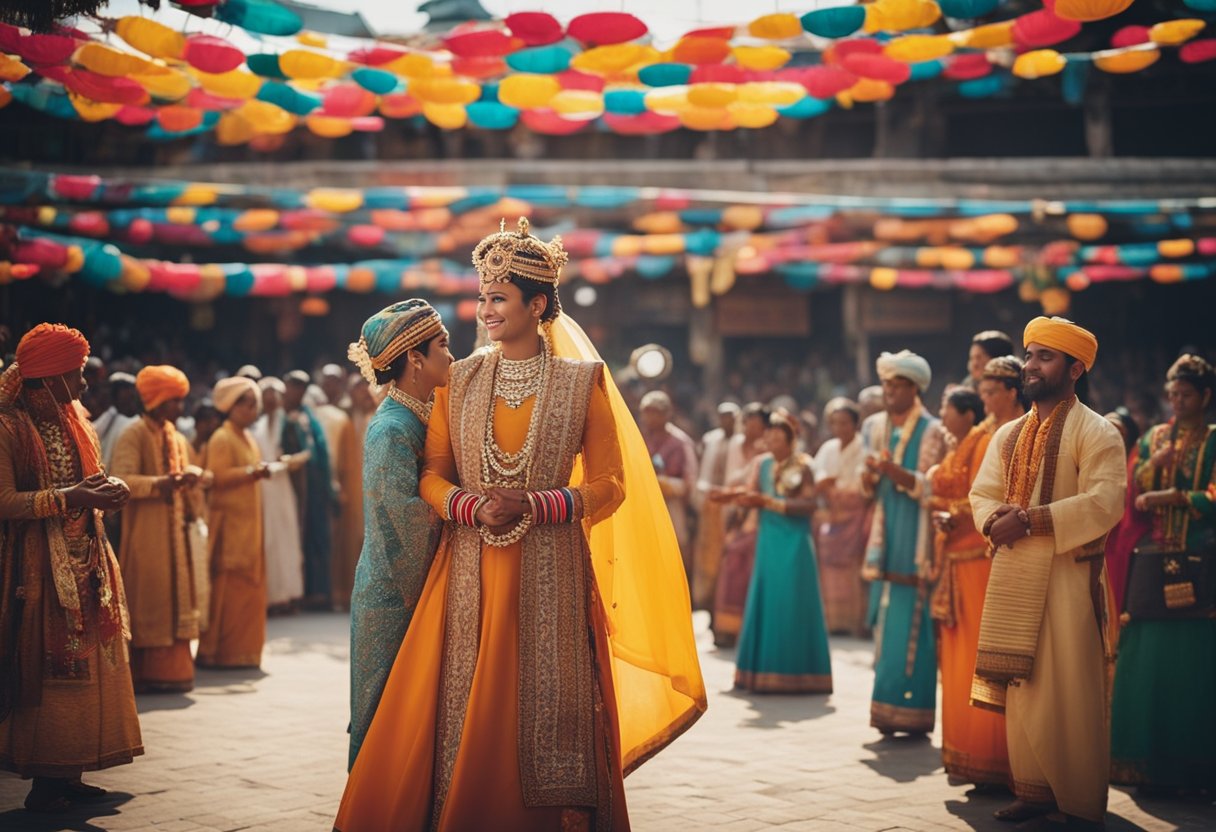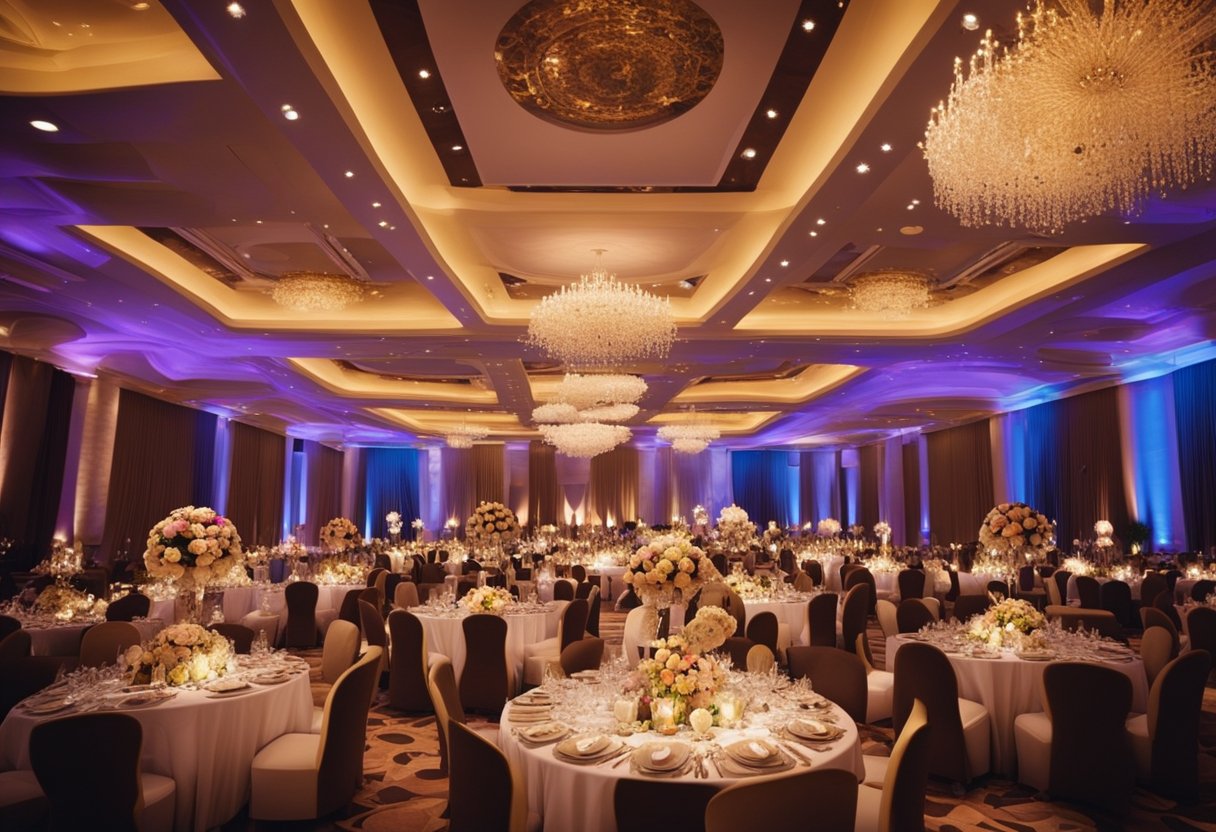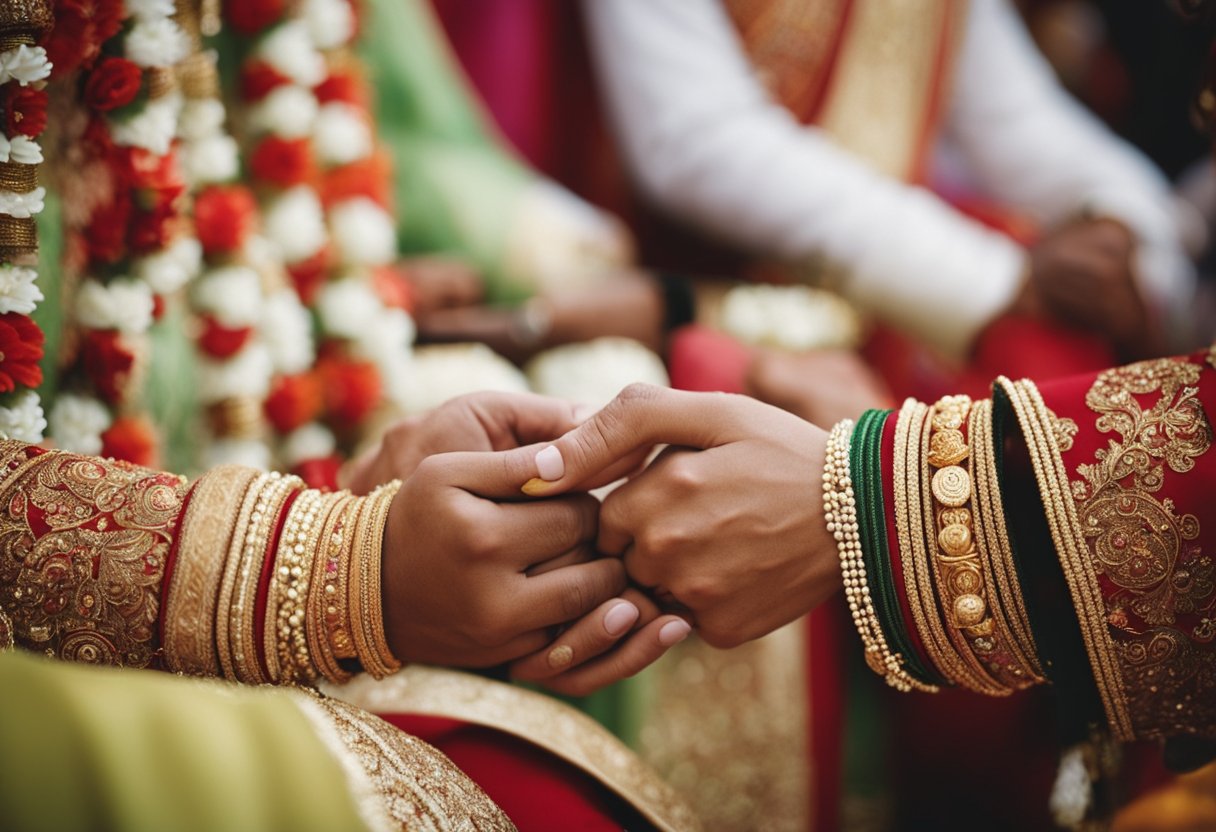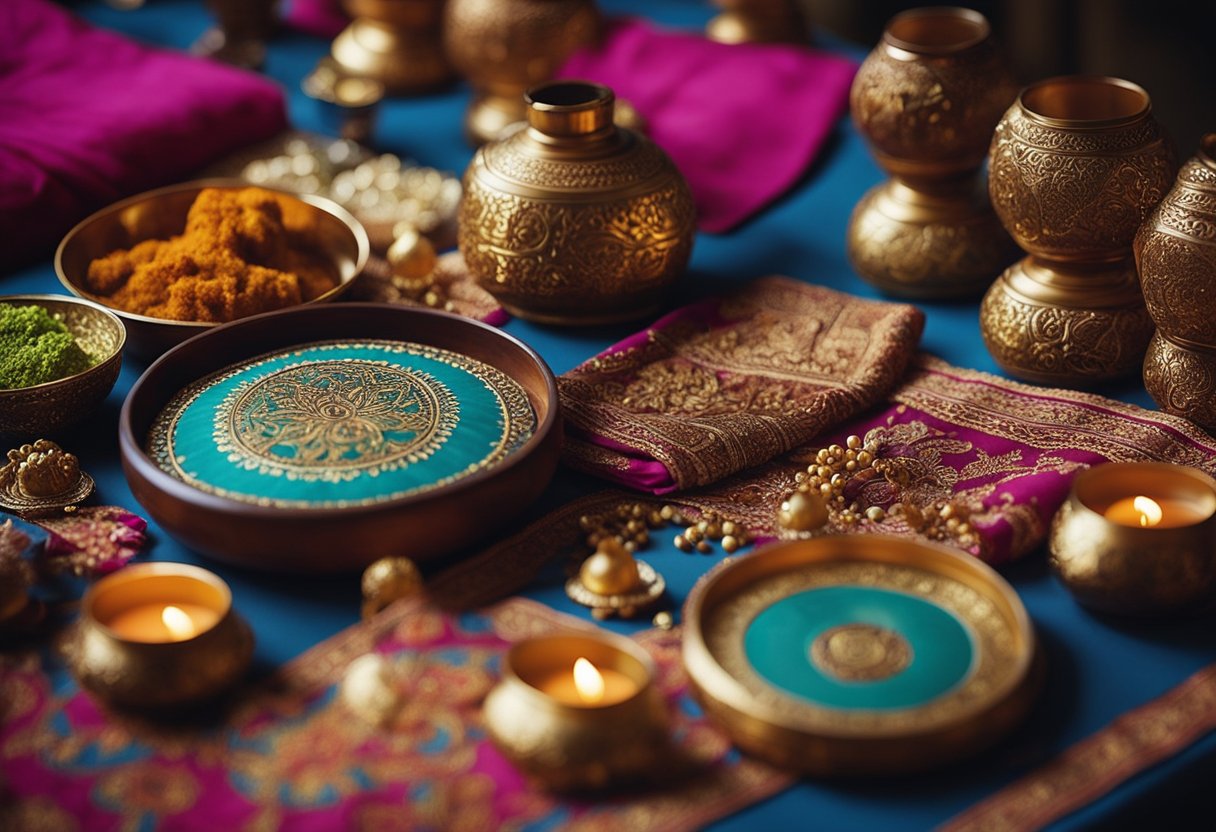The Varied Marriage Traditions Ceremonies Around the Globe: A Cultural Tapestry

Updated On: March 26, 2024 by Maha Yassin
Marriage ceremonies are a universal declaration of love and commitment, but their expressions are as diverse as the cultures that celebrate them. Across the globe, each country and culture weaves its tapestry of traditions into these special occasions. Whether it’s the intricate pre-wedding rituals of Asia, the profound religious ceremonies in various African nations, or the colourful and vibrant marital practices of the Americas, weddings are a testament to the cultural richness that defines human societies. These unions often follow age-old customs, yet they continuously evolve, revealing a fascinating interplay between enduring traditions and contemporary influences.
In delving into the myriad traditions that characterise weddings worldwide, we discover the significant roles played by historical customs, religious beliefs, and regional practices. While European celebrations might favour elegance and history, Asian ceremonies often focus on symbolism and harmony. In Africa, weddings often embody a strong sense of community and ancestral heritage, whereas American weddings might blend a mixture of various cultural practices reflecting the melting pot of nationalities. From sacred to secular, the underlying essence of all these marriage customs is a shared commitment to celebrate the start of a new joint life.
Historical Overview of Marriage Traditions
Marriage ceremonies have been pivotal in societies worldwide for centuries, embodying a tapestry of traditions that signify the union of individuals and families. One of the most enduring customs is the exchange of vows and rings, which traces its origins to ancient Rome, symbolising commitment and ownership.
The concept of a dowry is steeped in tradition, historically representing a transfer of parental wealth to the groom or his family, signifying the bride’s contribution to the marriage. Although less common today, it has been a crucial aspect of matrimonial alliances for millennia.
In Victorian England, the adage “something old, something new, something borrowed, something blue, and a silver sixpence in her shoe” emerged, representing various aspects of hope, continuity, and prosperity in the bride’s future life. Each item carries a specific blessing, from protection against envy (something blue) to wealth (silver sixpence).
- Something Old: Continuity
- Something New: Optimism
- Something Borrowed: Borrowed happiness
- Something Blue: Fidelity
- Silver Sixpence: Wealth
In China, the red wedding dress from ancient myths, notably the story of Panhu, reflects prosperity and good fortune. Today, many brides still embrace this vibrant tradition to honour their cultural heritage.
Weddings have always been more than the joining of two people; they celebrate cultures, a tapestry of customs passed down through generations. As we explore traditions, we honour the rich legacy of marriage ceremonies that continue to evolve yet firmly root us in our collective past.
Ceremonial Customs in Asia
Asia’s wedding ceremonial customs are a tapestry of traditions symbolising prosperity, happiness, and the continuity of family lineage. From the intricate henna tattoos adorning Indian brides to the shared sake in Japanese nuptials, these rituals are deeply rooted in ancestral practices and often continue for several days. Let us explore the distinct wedding customs that vary across this vast continent.
Indian Wedding Rituals
In India, weddings are an exquisite blend of rituals with deep symbolic meanings. The Sangeet ceremony is an event where families come together for an evening of song and dance, signifying the joyous union of the families. An integral and visually striking tradition includes the application of henna tattoos wherein intricate patterns are applied to the bride’s hands and feet to signify beauty and the strength of love in marriage.
Chinese Conjugal Practices
Chinese weddings often feature the colour red, symbolising luck and happiness. The bride typically wears a red dress, stepping into marital life amidst the loud sound of firecrackers to ward off evil spirits. A significant part of the wedding is the Tea Ceremony, where the couple serves tea to their elders, expressing gratitude and respect—a gesture firmly grounded in Confucian principles of filial piety.
Japanese Nuptials
In Japan, the traditional kimono is the garment of choice for brides, representing their family and social status. The garment often features intricate designs and can be passed down through generations. A focal point of Japanese wedding tradition is the sake-drinking ceremony, known as San San Kudo, which involves the couple taking three sips of sake from three different cups, reflecting a bond that is shared and unbroken.
European Marital Celebrations

Europe’s tapestry of wedding customs reflects its cultural diversity, ranging from the Mediterranean’s romantic rituals to Germany’s quirky customs and the time-honoured traditions of Eastern Europe.
Mediterranean Bliss
In Italy, couples often honour La Serenata, where the groom serenades his bride-to-be with love songs under her window the night before their wedding, symbolising his enduring affection. A staple at Greek nuptials is the Money Dance, where guests pin money onto the newlyweds’ clothes, offering prosperity and financial security.
German Traditions
The night before a wedding in Germany, friends and family engage in Polterabend, smashing porcelain to ward off evil spirits. Post-ceremony, couples might perform Baumstamm Sägen, sawing a log together, signifying the first obstacle they overcome in unison.
Eastern European Rites
In Russia, wedding celebrations often involve a playful bride-napping, where the groom must complete tasks or provide a symbolic ransom in the custom of Vykup nevesty. Across Eastern Europe, shared customs include intricate bow exchanges between the bridal party and family, honouring respect and gratitude.
African Wedding Rites and Rituals
In the tapestry of global marriage traditions, African wedding ceremonies stand out with their rich customs and colourful rituals. From vibrant bridal attires to unique celebratory dances, we find many ways love and commitment are celebrated across the continent.
West African Wedding Ceremonies
Nigeria is known for its diverse cultures, each with distinct wedding traditions. Notably, the Yoruba people cherish the Aso Oke fabric, a handwoven cloth often worn by the bride and groom. This fabric is not just clothing; it symbolises status, culture, and family heritage during the wedding ceremony. Brides may also receive a dowry, which varies from one ethnic group to another, cementing the joining of two families.
In Ghana, one of the unique wedding traditions is the “Knocking on the Door,” where the groom asks for the bride’s hand in marriage from her family, a sign of respect and honour in their wedding rites. This act is integral to the engagement ceremony and showcases the importance of family approval in the union.
Central African Customs
Moving to Central Africa, in countries like the Democratic Republic of the Congo, we encounter ceremonies that blend modernity and long-standing traditions. The bride’s wedding dress might be a fusion of contemporary style and traditional African prints, illustrating the merging of the new and the old.
In some Central African cultures, the camel dance is an integral part of the wedding festivities, especially among the Kanuri and Shuwa Arab peoples in Niger, where it reflects the groom’s wealth and social standing. In contrast, in some regions, gunshots fired into the air are not uncommon, signifying celebration and joy – although this practice is becoming less prevalent considering safety and legal restrictions.
American Connubial Practices

In exploring American connubial practices, we find a rich tapestry of traditions reflective of the diverse cultural landscape that defines the United States.
North American Norms
The tradition of destination weddings is prominent in American wedding customs. Couples often select exotic locales to exchange vows, creating a memorable event celebrating their union and providing a unique experience for their guests.
A quintessential tradition in American weddings is the concept of “something borrowed,” which symbolises the transfer of happiness. Brides typically incorporate an item borrowed from a happily married friend or relative to bring good fortune to their marriage.
When it comes to attire, the white dress is an emblem of American weddings, signifying purity and is often seen as an American standard for brides. This tradition, whilst not unique to the US, continues to be a steadfast norm.
Finally, the first dance symbolises the couple’s unity in their new journey together. This tradition is a touching highlight of American weddings, holding a timeless place in the customs observed across the United States.
Matrimony in the Americas
The tapestry of marriage traditions in the Americas is rich and varied, weaving together the customs of indigenous cultures with those brought by European colonisation and African influences. From the vibrant Latin American vows to the warm and spirited elements of Caribbean ceremonies, we explore the unique practices that define matrimonial celebrations across this diverse continent.
Latin American Vows
In many Latin American countries, matrimonial ceremonies are deeply rooted in cultural traditions that symbolise unity and love. In Mexico, for example, couples often include el lazo. In this wedding ritual, a loop of rosary beads or a ribbon is placed around the couple’s shoulders in a figure-eight shape to signify their eternal bond. Another cherished practice is La Serenata, where the groom serenades his bride the night before the wedding, often accompanied by a band.
Caribbean Ceremony Elements
The islands of the Caribbean hold their distinctive wedding customs. In Cuba, the wedding reception is known for its lively music and dance, with the money dance being a highlight. Guests pin money onto the bride and groom’s clothes, which helps the couple with their new life together. Over in Guatemala, one might witness the intricate heel-and-toe dance, a traditional performance piece that’s sometimes part of the wedding festivities. Meanwhile, cake pulling in some Caribbean cultures is a playful activity where charms attached to ribbons are baked into the wedding cake for unmarried guests to pull and predict their future.
Sacred and Secular Unions
Exploring the spectrum of marriage traditions, we find profound expressions of spirituality and legality. Our focus is the interplay between religious marriage rites and civil ceremonies that mark the commitments and unions worldwide.
Religious Marriage Rites
Marriage within various religious contexts is often seen as a sacred covenant. This solemn vow unites two individuals and brings them into a larger spiritual or divine plan. For many, exchanging wedding rings during the ceremony physically represents this enduring bond. In Christianity, for instance, some may participate in communion as part of their union, which underscores the significance of their vows in the presence of God, as discussed in the context of Christian wedding ceremonies.
Other traditions may incorporate specific rituals to symbolise different aspects of the marriage covenant; for example, Jain weddings are deeply influenced by principles of non-violence and self-discipline, with rituals reflecting these core tenets of the religion as noted in the examination of Jain wedding traditions and rituals.
Civil Ceremonies
In contrast, civil ceremonies are characterised by a legal framework established by a governmental authority. Such ceremonies often occur in a registry office and are more secular, focusing on the legalities of the union rather than religious connotations. The vows underscore the mutual consent and agreement between the partners to uphold their relationship as recognised by the state.
As mentioned in an analysis of the Marriage Act 1836 in England and Wales, there exists a fundamental ambiguity; for some, a ‘civil marriage’ could extend beyond registry office unions to include those conducted in registered places of worship, highlighting the evolving nature of secular unions as articulated in the discussion of secular or sacred marriage.
These ceremonies, whether anchored in spiritual beliefs or civil agreements, illustrate the diverse ways societies formalise the bond of marriage.
Contemporary Nuptial Trends
In modern matrimonial celebrations, the trends are as diverse as the couples themselves. We notice a shift towards personalisation and authenticity, with traditional norms giving way to more tailor-made experiences.
Destination Weddings: They’ve become a favourite among couples seeking unique settings, combining their nuptials with a holiday for their guests.
Photography: Candid captures are in vogue, telling the day’s story in a natural, unobtrusive style. The artistry lies in freezing genuine moments, providing an intimate glimpse into the day’s emotions.
- Matching Dress-Code Agenda:
- Guests: Themed attire to match the couple’s vision.
- Couple: Outfits that reflect their distinct personalities.
Unique Wedding Traditions: Incorporating local customs lends a touch of the location’s essence to the ceremony. It’s a nod to the cultural tapestry that defines our world’s vibrant diversity.
In the table below, we outline some key elements now found in contemporary ceremonies:
| Trend | Couples are opting for sustainable choices, like locally sourced menus. |
|---|---|
| Bespoke Themes | From glamping to vintage, themes dictate the aesthetic and ambience. |
| Eco-Friendly Options | Couples are opting for sustainable choices, like locally-sourced menus. |
| Adventure Elopements | Intimate ceremonies in remote, breathtaking locales. |
With these shifts, we embrace a new era of matrimonial celebration that simultaneously honours individuality and cultural richness.
Pre-Wedding Activities

As we approach the joyous union of two individuals, pre-wedding activities offer a celebratory ramp-up to the main event. Traditionally, these activities provide a time for friends and family to bond and revel in the anticipation of the upcoming nuptials.
Hen Parties and Stag Nights
In the UK, the bride-to-be celebrates with her closest friends during what’s known as a hen party. It’s a time for laughter, shared memories, and sometimes, themed festivities. The male counterpart, the stag night, is an opportunity for the groom and his friends to enjoy a night out, often involving various challenges or activities tailored to the groom’s interests.
Bridal Showers
Across the pond and often in the UK, the bridal shower is a more subdued gathering where the bride receives gifts to help set up her future home. It’s an event marked by games, gifts, and well-wishes for the couple.
Engagement Parties
Though not a necessity, the engagement party kicks off the wedding celebrations. It’s a time when the announcement is shared with a broader circle, can be hosted by the couple or their families, and serves as a warm-up to the wedding day. A guide to pre-wedding events suggests these gatherings can vary drastically in size and style but are rooted in joy and celebration.
Our collective experiences tell us that while the activities differ, the essence of bringing together friends and family remains a cherished prelude to the commitment two people are about to undertake. Each pre-wedding event is pivotal in preparing all involved for the journey ahead.
Finances and Formalities

When considering the financial aspects of marriage ceremonies, we observe a remarkable diversity worldwide, but we also see that certain expenses are almost universally expected. One significant expense is the wedding rings. These bands symbolise marital commitment, and costs vary depending on material and design.
Many couples begin their wedding planning with a budget in mind. This can incorporate expected costs for the venue, attire, and other essentials. In some cultures, a dowry remains a traditional practice where a sum of money, property or valuable items is given to the groom’s family by the bride’s family.
In cases where savings are insufficient, some couples may consider taking out a loan to cover wedding costs. This option demands careful evaluation to ensure financial security after the nuptials. Below is a breakdown of typical financial components of marriage ceremonies and their potential impact:
- Budget: Crafting a budget is crucial and often dictates the scale of a wedding.
- Loan: While a loan can stretch financial resources, it is essential to avoid excessive debt.
- Wedding Rings: These are essential but vary from simple bands to opulent diamonds.
- Dowry: Though not prevalent everywhere, dowries can significantly influence marital negotiations.
It is paramount for couples to traverse the terrain of finances and formalities with clear, honest communication and a mutual understanding of expectations and limitations.
FAQs
This section will answer some of the most commonly asked questions about the rich tapestry of marriage ceremonies and customs observed worldwide.
What are some unique marriage customs from various cultures?
In a traditional Mexican wedding, a lasso of rosary beads and flowers is often draped around the couple as they exchange vows, symbolising unity. Meanwhile, in India, the bride and groom might wear floral garlands, which they exchange as a gesture of acceptance and respect.
How do wedding ceremonies differ across religions?
Wedding ceremonies in Islam, for instance, feature distinctive practices such as the Nikah, where the marriage contract is signed. Christian weddings typically involve the exchange of vows before God. In contrast, a Jewish wedding ceremony includes the signing of the Ketubah, a marriage contract, followed by the groom placing a ring on the bride’s finger and the breaking of a glass to remember the destruction of the Temple in Jerusalem.
Can you name several unusual matrimonial rituals followed historically?
Historically, the Celtic tradition of handfasting involved tying the couple’s hands together to symbolise their binding. Spartan soldiers in ancient Greece would steal away their brides in a mock abduction, an act believed to symbolise the groom’s dominance.
Which nations have the most elaborate wedding festivities?
Nations with notably elaborate wedding festivities include India, where multi-day celebrations are filled with various ceremonies and vibrant attire, and Nigeria, where traditional wedding attire and lively dances play a crucial role in the celebrations.
How are marital traditions reflective of cultural diversity?
Nuptial traditions often mirror a culture’s values, beliefs, and social structures. For instance, the money dance in Cuba reflects the community’s support for the newlyweds. At the same time, Russian weddings might include crowning the couple, highlighting the importance of the orthodox faith in the ceremony.
What examples of distinctive wedding practices can be found in Western societies?
In Western societies, the ‘something old, something new, something borrowed, something blue’ tradition is distinctive to many weddings, representing continuity, optimism for the future, borrowed happiness, and fidelity. There’s also the custom of carrying the bride over the threshold, which originated from the belief in ancient European societies that it protected her from evil spirits.






